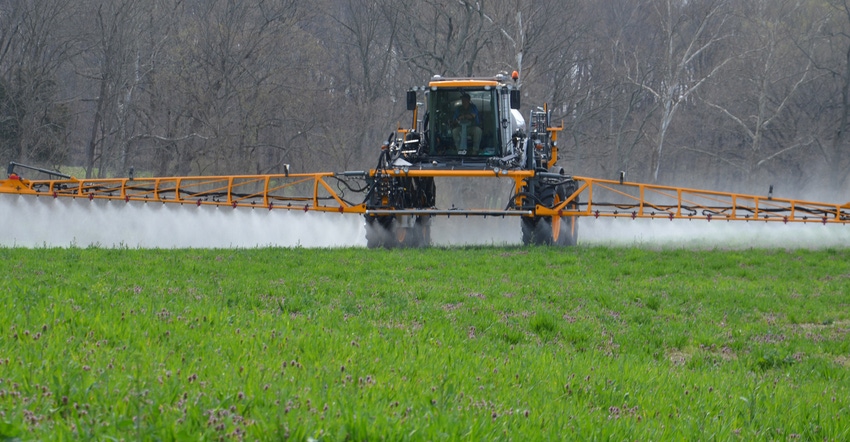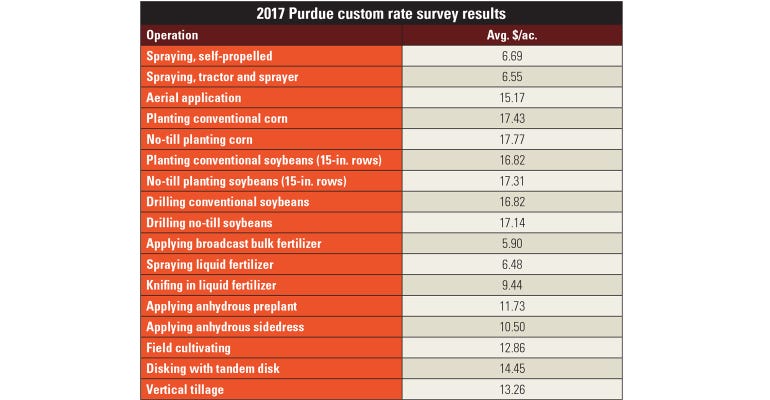
Do you want your neighbor to spray for you? How much should you pay him or her? Or maybe you’re spraying for someone else. How much should you charge?
Michael Langemeier, Purdue University Extension agricultural economist and associate director of Purdue’s Center for Commercial Agriculture, tries to keep a pulse on custom rates by collecting data from farmers every couple of years. He cautions that the data he collects should only be used as a starting point, but it gives an idea of what might be customary and reasonable.
The table below contains custom rates for selected operations, based on data collected for a 2017 report. It provides a starting point for custom rate negotiations.
The report includes averages paid. Custom rates charged across the state typically fall into a wide range, depending upon what someone is willing to do a job for rather than if he or she is considering all costs.
Rates also can vary widely from location to location, Langemeier says. Part of the variation is due to how many available custom operators are, and how much demand there is for custom work.

Unless otherwise noted, the custom rates reported from the survey include payments made for fuel, the operator’s labor and machinery ownership costs, Langemeier says. He suggests that if you do large amounts of custom work, you should estimate full ownership and operating costs for your services. This may produce a number that is different than the “going rate” for the area. At some point, you need to recover full costs to make a custom operation profitable.
About the Author(s)
You May Also Like




